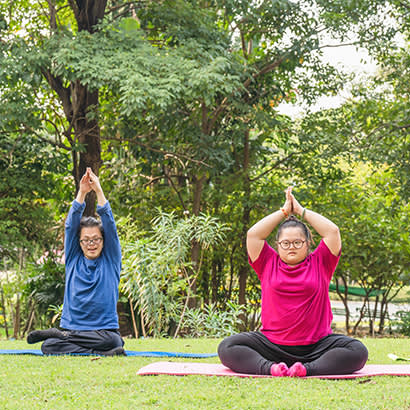
For an enhanced digital experience, read this story in the ezine.
Whether it’s simply walking in a park, gardening, biking, kayaking, wildlife watching or even just sitting with a view of green space, nature is good for what ails us.
Our physical, mental and emotional health is surprisingly codependent on interactions with our natural environment. Regular exposure delivers restorative benefits; a lack of it brings detrimental consequences.
In his book, Last Child in the Woods, author Richard Louv describes the effects of what he called “nature-deficit disorder,” which is a distressing bundle of physical and emotional afflictions from the lack of personal interaction with nature — like low self-esteem, social anxieties, obesity and cardiovascular diseases.
And he’s not a lone prophet crying in the wilderness — a growing body of worldwide research backs him up.
Such studies have shown that time spent in nature can raise our morale, sociability and mental clarity. It can reduce the effects of stress, anxiety, attention deficit disorder behaviors and more.
For children with Autism Spectrum Disorder (ASD), research shows that engagement with nature provides sensory motor skill, emotional and social benefits. However, related issues — like sensory challenges, phobias, inappropriate behaviors and safety concerns — may make the adventure a bit harder than just your average walk in the park. Of course, each child’s strengths and needs vary, but psychologists say nature exposure can be an effective intervention strategy.
Beyond its calming attributes for children with ASD, nature also can be an exciting place to focus their exceptional powers of observation. The same single-mindedness that can master a narrow, arcane topic may also find fascination in the feel of a breeze, the ripples in a puddle, the rhythm of a katydid (a bush cricket), the colors in a rainbow, the fragrance of a rose, or the textures and patterns in a pinecone.
Interacting with animals is another encouraging ASD-nature connection. Equine therapy uses horses and trained instructors to help children stay calm, focus, think, talk, behave and learn. Family pets can be a ready-at-any-time, home-based therapy. Studies have shown that children with autism who had a pet from a young age tended to have greater social skills. Other research verifies how social behaviors in children with ASD temporarily improve after even a short play period with a live animal, such as a guinea pig (versus a toy).
My family experience with my youngest son, who has Asperger’s Syndrome, bears this all out. From the time he was 5 years old, we lived in the country, with nature literally outside our door, and he often played and explored outside contentedly for long stretches. (We did have a neighbor through the woods who sometimes blasted his radio as far as our yard, which greatly upset our son in his quiet communing with nature. We had to go ask him to turn it down, which he graciously did.) For a time, we had a knuckleheaded dog, named Toby, which our young son loved and treated very well, as he did a series of multicolored cats. One year, he incubated bobwhite quail eggs and raised the chicks until they matured, and we released them into our back field. Another year, he raised chickens until the roosters crowed at 4 a.m. In all his animal interactions, he brought enthusiasm and a pleasant demeanor to his interest and grew in his responsibilities for caring for them.
The American Academy of Child and Adolescent Psychiatry adds that caring for a pet can help children develop nonverbal communication, compassion, empathy and trusting relationships. Along with their connection to nature, pets also can bring comfort contact for unmet physical and emotional needs.
Here are some simple starting steps to introduce children with ASD to nature:
- Allow them to enjoy unstructured play in a natural setting in their own way. Do not feel you must direct them; self-directed nature play builds creativity and problem solving. Let them stare at a leaf, if that’s what they like. Getting dirty is fine.
- Your natural area need not be a park or preserve set aside for such purposes. It can be a flower bed, a backyard tree or even some sticks and leaves. Start from where you and your child are both comfortable, and plan for incremental steps.
- Look for different kinds of wildlife or plants, even if it is through a window. Set up a birdfeeder or watch for squirrels. Let them count the number of butterflies, or how many different kinds of weeds they can find growing in the crack of the sidewalk. Nature is all around, even in urban areas, there to be noticed.
- Add small excursions as comfort and interest grows. Go on a nature scavenger hunt. Plan a trip to pick apples, strawberries or pumpkins. Try to identify constellations in the nighttime sky. Go out in a rainstorm. Make bark rubbings of trees. Order a chrysalis and watch the butterfly emerge. Create a windowsill garden. Plant a tree. Build a snowman. Erect a small hut as a safe outdoor shelter as a play retreat, where they can simply sit and be silent if they want. Collect differently colored leaves, etc.
Simple interactions with nature can bring both immediate and long-range therapeutic benefits for children with ASD. All they need is someone to introduce them in ways they can appreciate; nature provides the rest.
Tim Herd, CPRE, is CEO of the Pennsylvania Recreation and Park Society.


